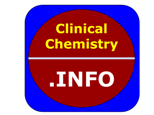Clin Chem Lab Med. 2025 Oct 23. doi: 10.1515/cclm-2025-0637. Online ahead of print.
ABSTRACT
OBJECTIVES: Reference intervals (RIs) are essential for interpreting laboratory test results. It is recommended that each medical laboratory establishes and reviews its own RIs. The use of direct methods is often unfeasible for most laboratories, while indirect methods are a more viable alternative. However, these methods require not only medical, but also statistical and technical expertise, thereby limiting accessibility for many laboratories. To address this challenge, a web-based application was developed to facilitate the estimation and verification of RIs using real-world laboratory data.
METHODS: The application was developed using R Studio and the Shiny web framework. The tool supports five indirect methods for reference interval estimation: refineR, TMC, TML, kosmic and reflimR. Furthermore, a Docker container was designed to enable a secure local deployment.
RESULTS: Up to 200,000 laboratory test results can be included via a straightforward copy-and-paste input. The tool provides recommendations for sex-based stratification by performing statistical analysis. In addition, a drift-detection algorithm was developed to analyze whether age-based stratification is necessary. The results of RI estimation are displayed and visualized alongside the underlying data distribution. Existing RIs can be verified by comparing them against calculated intervals.
CONCLUSIONS: ReferenceRangeR is a user-friendly tool for estimating and verifying RIs using real-world laboratory data, eliminating the need for statistical or technological expertise, thereby supporting laboratory professionals in meeting the current regulatory standards.
PMID:41125064 | DOI:10.1515/cclm-2025-0637
